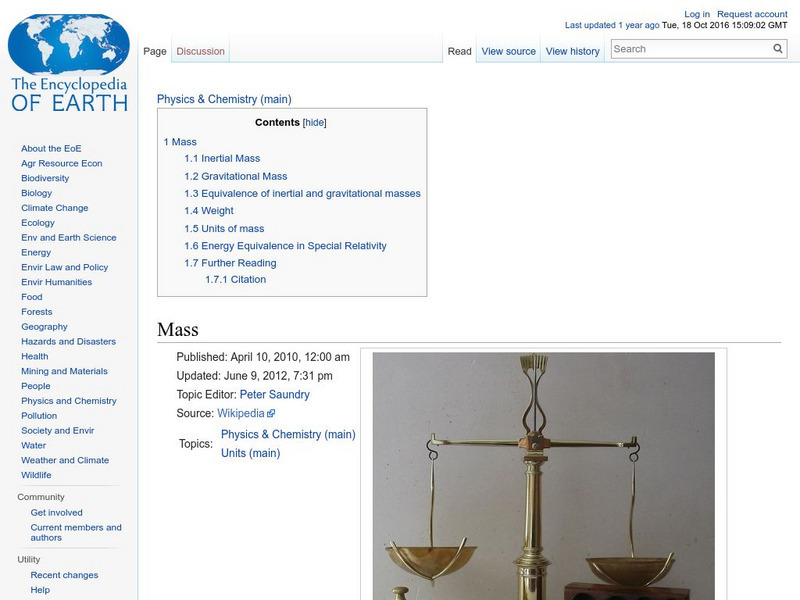It's About Time
Volcanic History of Your Community
Did you know there are 20 volcanoes erupting at any given time? Pupils look at various igneous rocks, read local geologic maps, and determine if their area has a history of volcanic activity. A reading passage and analysis questions...
It's About Time
Plate Boundaries and Plate Interactions
How does the Earth continually repair itself? Explore the answer to this question, and others, with a unit on plate boundaries and interaction. Pupils classify the types of movement at plate boundaries and identify the...
It's About Time
The Changing Geography of Your Community
Lead your class in exploring their local communities as well as the general environment. As they determine continental distributions by investigating minerals, rocks, and fossils located in their local region, pupils construct...
Tutankhamun
Pharaohs, Pyramids and the World of the Gods
Your young historians will learn all about the pharaohs, pyramids, and gods of ancient Egypt with these informational text worksheets, each of which are accompanied by hands-on, follow-up activities.
McGraw Hill
Arthropods
Are spiders related to crabs? Study the order of arthropods with a reading selection about animal diversity. It provides details about each class within the order, as well as vivid pictures and explanatory charts.
Port Jefferson School District
Hurricane Katrina
Young scientists track Hurricane Katrina across the Atlantic Ocean as they learn about these destructive forces of nature. Provided with a table of data tracking the location and conditions of Katrina over a one week span, students...
International Technology Education Association
Dampen That Drift!
The spacecraft is drifting too far off course! Two games help explain how a spacecraft can use its thrusters to maintain its position. The games have pupils be the components of vectors in order to create and counteract the...
International Technology Education Association
Telescope as Time Machine
This resource provides an explanation of NASA's GALEX mission and how the space-based telescope can view distant galaxies as they were billions of years ago. The resource also discusses the other aspects of galaxies that GALEX...
PBS
Pbs: Nova: Learning About Earth's History With Ice Cores
This resource explains how ice cores are used to analyze past events like air pollution, volcanic activity, climate changes, and radioactivity.
Globio
Glossopedia: Earth Day
Earth Day is a worldwide celebration held annually on April 22nd. The purposes of Earth Day, the history of and the various activities held around the world are described. Activities and projects that can be done daily or year round are...
Encyclopedia of Earth
Encyclopedia of Earth: Physics & Chemistry: Mass
Defines inertial and gravitational mass, their scientific history, formulas used in their calculation, the definition of weight, units used for mass, and mass as perceived in the theory of special relativity.
Department of Defense
Do Dea: Earth Science: Unit 3: Geologic History: Timeline of the Earth [Pdf]
This 2-page handout provides short descriptions of the different aeons, eras, and periods in the Earth's geological history.
CK-12 Foundation
Ck 12: Plate Tectonics and Seas of the Paleozoic and Mesozoic Era Study Guide
[Free Registration/Login may be required to access all resource tools.] Provides a brief overview of plate tectonic activity during the Paleozoic and Mesozoic eras and the changes in sea level that occurred. Includes some questions to...
Sonoma State University
Sonoma State University: Environmental Movement
Discover background details about the history of the social movement dealing with environmentalism. Lists key environmental legislation from 1963-1980.
Harvard University
Harvard University: The Sun
Includes a brief history of the sun's development and its future. Also provides simple statistics, solar activities, and references.
PBS
Pbs Learning Media: Stories in the Ice
Take a journey back through time, using ice cores to learn about Earth's climatic history, including evidence of global warming and nuclear activity.
Wikimedia
Wikipedia: The Black Hole
This site examines the black hole as an object in astrophysics. Delve into this comprehensive resource that covers this concept from its history, to qualitative physics, the reality of black holes, mathematical physics and more.
The National Gallery (UK)
National Gallery, London: Teacher's Notes Touring Partnership Exhibition
Five paintings and their artists are discussed in these notes. Also included are some suggestions on using the painting in the primary classroom, ideas for activities and cross-curricular links.











![Do Dea: Earth Science: Unit 3: Geologic History: Timeline of the Earth [Pdf] Handout Do Dea: Earth Science: Unit 3: Geologic History: Timeline of the Earth [Pdf] Handout](https://d15y2dacu3jp90.cloudfront.net/images/attachment_defaults/resource/large/FPO-knovation.png)

